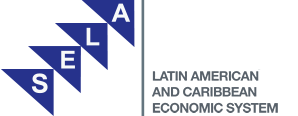COLOMBIA
Official name: REPUBLIC OF COLOMBIA
Short name: Colombia
Date of membership: 18 June 1979
Capital: Bogota
Government
Administrative divisions: 32 departments (departamentos, singular - departamento) and 1 capital district (distrito capital): Amazonas, Antioquia, Arauca, Atlantico, Distrito Capital de Bogota, Bolivar, Boyaca, Caldas, Caqueta, Casanare, Cauca, Cesar, Choco, Cordoba, Cundinamarca, Guainia, Guaviare, Huila, La Guajira, Magdalena, Meta, Narino, Norte de Santander, Putumayo, Quindio, Risaralda, San Andres y Providencia, Santander, Sucre, Tolima, Valle del Cauca, Vaupes, Vichada.
Independence: 20 July 1810 (from Spain)
Constitution: July 5, 1991
Suffrage: 18 years of age; universal
Executive branch: Chief of state: President Ivan Duque (since August 2018). Vicepresident: Martha Lucia Ramirez (since August 2018)
Note: The president is both the chief of state and head of government .
Legislative branch: Bicameral Congress or Congreso consists of the Senate or Senado (102 seats; members are elected by popular vote to serve four-year terms) and the House of Representatives or Camara de Representantes (166 seats; members are elected by popular vote to serve four-year terms).
Judicial branch: Four roughly coequal, supreme judicial organs; Supreme Court of Justice or Corte Suprema de Justicia (highest court of criminal law; judges are selected by their peers from the nominees of the Superior Judicial Council for eight-year terms); Council of State (highest court of administrative law; judges are selected from the nominees of the Superior Judicial Council for eight-year terms); Constitutional Court (guards integrity and supremacy of the constitution; rules on constitutionality of laws, amendments to the constitution, and international treaties); Superior Judicial Council (administers and disciplines the civilian judiciary; resolves jurisdictional conflicts arising between other courts; members are elected by three sister courts and Congress for eight-year terms).
Internet code: .co
Official Portal Web: http://www.presidencia.gov.co
Geography
Location: Northern South America, bordering the Caribbean Sea, between Panama and Venezuela, and bordering the North Pacific Ocean, between Ecuador and Panama.
Area: 1,138,910 sq km
Land boundaries: 6,004 km
Border countries: Brazil 1,643 km, Ecuador 590 km, Panama 225 km, Peru 1,496 km (est.), Venezuela 2,050 km.
Coastlines: 3,208 km (Caribbean Sea 1,760 km, North Pacific Ocean 1,448 km)
Natural resources: Petroleum, natural gas, coal, iron ore, nickel, gold, copper, emeralds, hydropower.
Environment - international agreements: Party to: Antarctic Treaty, Biodiversity, Climate Change, Climate Change-Kyoto Protocol, Desertification, Endangered Species, Hazardous Wastes, Marine Life Conservation, Ozone Layer Protection, Ship Pollution, Tropical Timber 83, Tropical Timber 9.
Economic indicators
| Total at current prices | 313901 | Millions USD | 2017 |
| Per capita at current prices | 6398 | USD | 2017 |
| Growth rate per capita at constant prices | 1.8 | % | 2017 |
| Country share in regional GDP | 5.8 | % | 2017 |
| Imports of goods and services (% of GDP at current prices) | -19.7 | % | 2017 |
| Exports of goods and services (% of GDP at current prices) | 14.6 | % | 2017 |
Source: CEPALSTAT. Colombia: National Economic Profile. Databases and Statistical Publications. ECLAC. On line. Inquiry: July 07, 2019.
Socio-demographic indicators
| Total population | 49 835 | (000) | 2015 |
| Life expectancy | 75 | Years | 2015-2020 |
| Women | 78 | Years | 2015-2020 |
| Men | 71 | Years | 2015-2020 |
| Public health expenditure as a percentage of GDP | 6.2 | % | 2015 |
| Literacy rate for persons between the ages of 15 to 24 | 98.7 | % | 2016 |
| Net rate of enrolment in primary education | 91.3 | % | 2017 |
| Net rate of enrolment in secondary education | 78.8 | % | 2017 |
| Public expenditure on education as a percentage of GDP | 4.4 | % | 2017 |
| Gini Coefficient | 0.51 | % | 2017 |
| Unemployment | 9.9 | % | 2017 |
Source: Colombia: National Socio-Demographic Profile. CEPALSTAT. Data Bases and Statistical Publications.ECLAC. On line. Inquiry: July 07, 2019.
Languages: Spanish (official)






